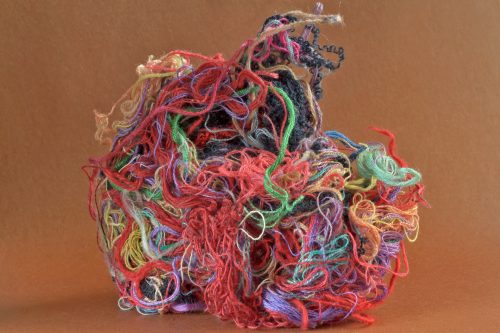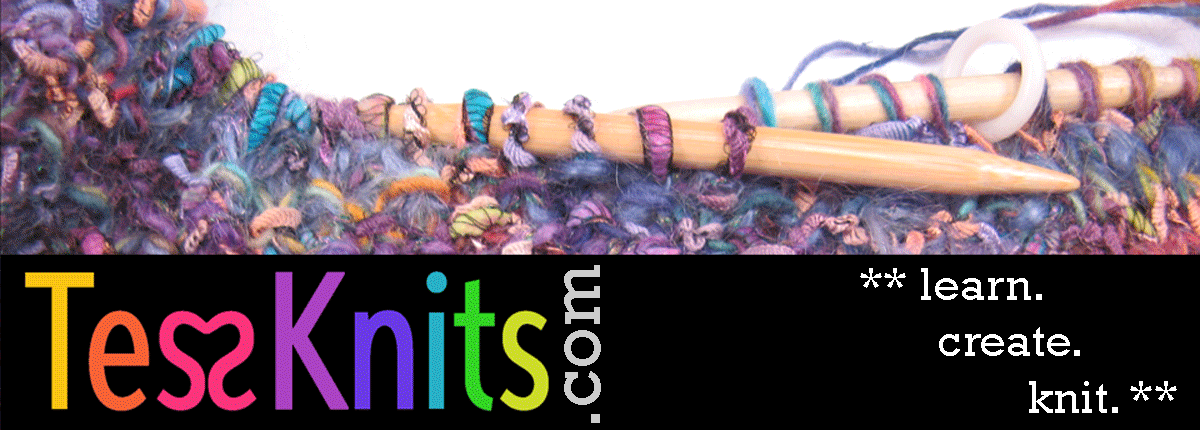
What is it exactly about a tangled mass of yarn that makes everyone itch to get their hands on it and start untangling?
Well, maybe not everyone. Usually, the person whose yarn it is has had it up to (wherever) with the tangles.
But there are those of us who can hardly keep our hands off it. In fact, there is one Ravelry group of over 3500 people dedicated to untangling other peoples’ yarn, for the cost of postage and maybe a little gifty item as a thank you.
They have one legendary case (the “Stash Disaster of Epic Proportion“) that spanned nearly “two years of fun” and 14 pages of posts, including an unknown number of skeins and detanglers and several terrifying pictures.
If you want to get in touch with this group, click here for a post on how their services work.
As for doing it yourself, there are a few tips and tricks to successful de-tangling. Here are mine —
It probably goes without saying, but I’ll say it anyway: ground zero is, be patient and stay calm. Detangling can be meditative, almost like knitting, but you have to be in the right frame of mind for it. Detach yourself from any upset emotions over things such as, how much you spent on that mess, and how mad you are at your pet/child/self for whatever caused it. When it starts getting to you, step away from the scissors, make a cup of tea or coffee, and take a few deep breaths. A little entertainment can help — maybe watch a favorite movie while you do the deed, or catch up on your podcasts.
Once you’re feeling all zen about it, here’s what to do:
The absolute #1 holy grail rule of untangling is: Don’t pull tightly on a single strand of yarn. The yarn is probably not really in “knots” per se, it’s in loops that are interlocked — much like knitting. You want to loosen those loops up so they can “unravel”. It’s a little hard to explain in words, but you want to be pulling the yarn mass apart, opening it up and loosening the loops so they can separate. Keep pulling things open, rather than pulling on a free end. That will only tighten loops around each other.
Usually I start with a free end, and start winding up a little ball with it. Tip #2 is Don’t start taking this little end ball through other loops, until you’ve tried the loosening technique for a while and you’ve loosened up all the clumps you can find, and this is the only way to finish the job. Putting that free end through a loop has a similar effect as what you do when you are binding off: you put the yarn end through the last loop and pull tight, which fastens things off, and prevents unraveling — which is exactly the opposite of what you want to be doing.
However, sometimes it becomes unavoidable, and once you start taking that end through other loops, that’s pretty much what you’re going to have to keep doing. If this happens, here is a tip from the pros in the detangling group:
Hold the working end and wind it into a ball as necessary, and instead of pulling it through each loop separately, put your hand through these loops (loops end up on your wrist). Once your wrist is “full,” pull the end through all these loops at once.
So to recap: you’ve found an end, you have started pulling a bit of yarn out of the main mess, and started winding it into a little ball. Then things get tight. So follow the yarn into the mess, find where it’s getting knotted up, and loosen that clump so you can pull a bit more out. Repeat. Tip #3 is that A crochet hook or dpn or other small pointy thing can be a big help in loosening up those clumps.
Tip #4 is that While scissors may seem like the only solution, in truth they really don’t help. Cutting isn’t going to un-knot any knots or un-loop any loops. It doesn’t magically untangle a thing. You will still have a big tangle of yarn — but now it will also be cut.
So if/when you feel the need to cut, JUST DON’T DO IT. Take a break, take a day away from the mess, whatever it takes to get you back to ground zero again.
Tip #5 is, be aware that sometimes two strands of yarn are not even looped around each other, but are being held together by a sort of fuzzy little collar or band. Learn to recognize these so you can break or cut them free. I like to maneuver the two connected strands so that they aren’t hooked around each other, and instead one strand is in each hand, with the fuzz in between. Then break that little bugger.
Finally, a bonus tip, again from the pros: Tie a stitch marker to the free end(s) so you can find them more easily. I haven’t personally tried this one, but I’m keeping it in my back pocket for next time, because you know there’s always a next time…
